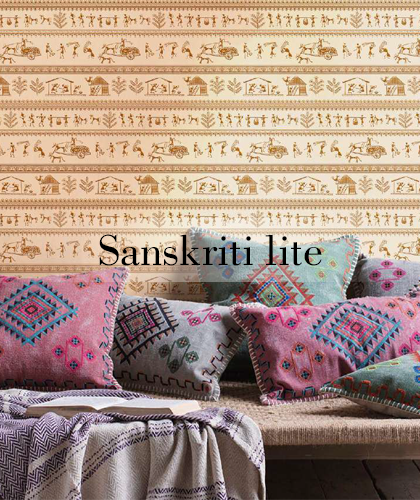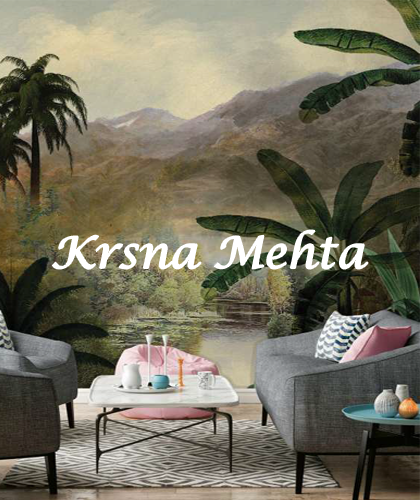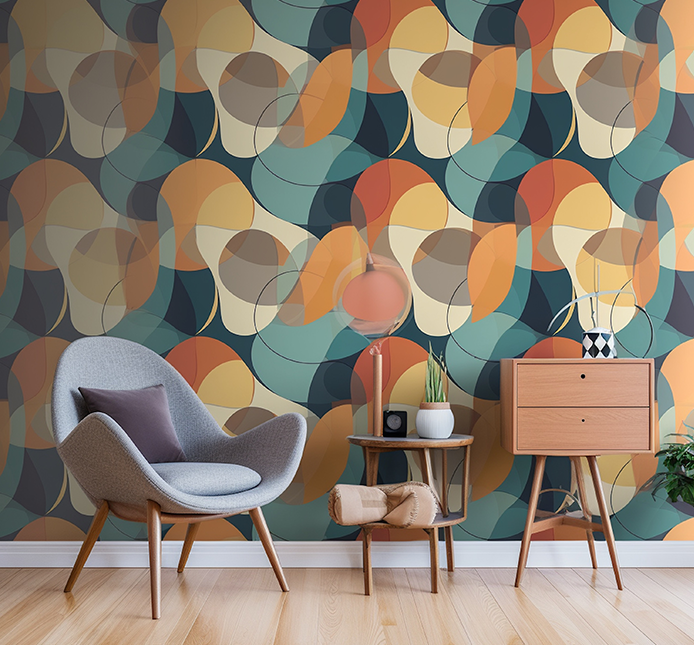Designer Wallpapers
Collection

Marshall Best Design

Sanskriti Lite- A Traaditional wallpaper series

Krsna Mehta- A natural wallpaper series
Collection
Marshall Best Design
Sanskriti Lite- A Traaditional wallpaper series
Krsna Mehta- A natural wallpaper series
We have a large selection of wallpapers for you to choose from. From bold, abstract patterns to delicate floral motifs, we have something to suit every taste and preference. With so many options to choose from, we are sure you will find your perfect wallpaper! View some of our most well-liked creations.
Economical
Eco-Friendly
Hygienic
100% Washable
When it comes to decorating your walls, both wallpaper and paint have their pros and cons. However, in terms of cost, the answer to whether wallpaper is cheaper than paint is not straightforward. On one hand, the cost of wallpaper can vary widely depending on factors such as the brand, pattern, and material. Some wallpapers are quite expensive, particularly those made of high-quality materials like silk or grasscloth. On the other hand, there are also affordable options available, such as vinyl wallpaper.
In contrast, paint is generally less expensive than wallpaper. While the cost of paint can vary based on the brand and quality, it is generally more affordable than wallpaper. Additionally, paint requires fewer tools and materials to apply, making it a cost-effective option. However, the cost of painting can quickly add up if you hire a professional painter. The labour costs associated with painting can be quite high, particularly if you have a large room or complex design.
Ultimately, the decision between wallpaper and paint will depend on your budget and personal preferences. If you're looking for a budget-friendly option, paint is likely the way to go. However, if you're willing to invest in high-quality wallpaper or want a more unique look for your walls, wallpaper can be a great choice. Regardless of which option you choose, AapkaPainter can help you create the perfect look for your home.
When it comes to choosing the best type of wallpaper for your home, there are several factors to consider such as durability, style, and ease of installation.
If you want to create a bold and unique statement, consider using a wallpaper mural. These oversized designs can transform any room into a work of art, and they come in a variety of styles and themes, from nature scenes to cityscapes. The best type of wallpaper for your home depends on your style and the specific needs of each room. So, take the time to explore your options and find the perfect wallpaper to enhance the beauty of your home.
Choosing the right wall covering for your home is an important decision that can impact the overall look and feel of your space. With so many options available, it can be overwhelming to choose the perfect wallpaper for your walls. However, with a little guidance, you can make an informed decision and select the best wall covering for your needs.
Choosing the perfect wallpaper for your walls at home requires careful consideration of the room's function, mood, size, quality, and overall design scheme. With these factors in mind, you can choose a wallpaper that will enhance the look and feel of your space and bring your design vision to life.
Keeping your wallpaper or wall covering clean and well-maintained can help extend its lifespan and keep it looking great for years to come. Here are some tips for cleaning and maintaining your wallpaper or wall covering:
By following these tips, you can keep your wallpaper or wall covering looking great for years to come!
When deciding between paint and wallpaper, there are several factors to consider, such as the look you want to achieve, the level of maintenance you are willing to commit to, and your budget.
There are several advantages of using wallpaper over paint, including:
Overall, wallpaper can be a great option for those looking to add style and personality to their walls, while also offering practical benefits such as durability and ease of maintenance. The decision between paint and wallpaper comes down to personal preference and the specific needs of your space. If you are looking for a simple and budget-friendly way to update your walls, the paint may be the way to go. However, if you want to add texture and visual interest to your walls, wallpaper may be the better option.
Calculating the amount of wallpaper needed for a room involves measuring the dimensions of the walls and performing a few calculations to ensure accurate coverage. By following these steps, you can determine the appropriate quantity of wallpaper required for your project. Here's a step-by-step guide:
Total Square Footage = (Height of Wall 1 × Width of Wall 1) + (Height of Wall 2 × Width of Wall 2) (add more wall if there)
Number of Rolls = Total Square Footage / Square Footage per Roll
Total Rolls with Waste = Number of Rolls + (Number of Rolls × Waste Percentage)
By following these steps, you should be able to determine how much wallpaper you need for your room. These calculations provide an estimate, and it's advisable to consult the specific wallpaper manufacturer's instructions for precise measurements and any additional factors that may affect your project.




